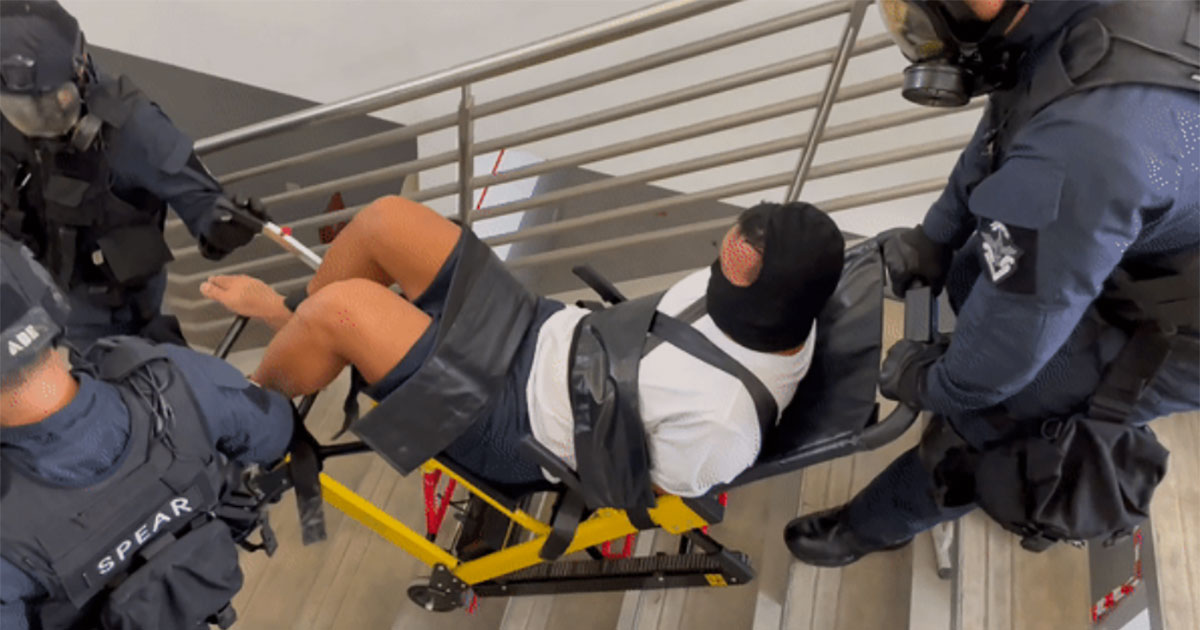Follow us on Telegram for the latest updates: https://t.me/mothershipsg
What happens when Singapore prison inmates turn violent?
All threats will be neutralised by the Singapore Prisons Emergency Action Response (SPEAR) force, a fully armed, elite tactical unit trained to respond to security breaches or unrest.
How SPEAR operates was demonstrated during a media session on Feb. 8, and to highlight the use of technologies to aid the unit in carrying out its duties.
SPEAR activated once every two weeks
SPEAR force officers get activated about once every two weeks, deputy commanding officer and superintendent of prisons, Derry Teh said, but he was quick to add that "not every activation requires the use of force on inmates".
Officers just need to show up and this will already act as a deterrent, as prisoners will stand down because they have heard of the SPEAR force's reputation.
Teh said:
"Sometimes by mere presence and reputation, the inmates know that this is the point they should desist, and they need not put up a full struggle. Among the activations that we responded to, quite a few of the inmates stood down upon hearing the siren, or upon seeing us give them the last warning."
SPEAR force is only activated in the most extreme of scenarios, according to Teh.
However, once called upon, the SPEAR force will go in knowing that the prison "really needs our help", he added.
One factor that is considered in these scenarios is the profile of the inmate, if they are large-sized or martial arts-trained, or if they are of unsound mind, with "a much higher threshold" for pain.
During the demonstration, SPEAR force officers provided a glimpse of what could happen during unrests in prison and how they will take down the hostile target while not eradicating the threat completely.
Surveillance tool
Surveillance tools come in handy in the event that inmates cover the surveillance cameras in the cell and block the viewing panel to conceal what they are doing or any weapons they have fashioned out of contraband or everyday items.
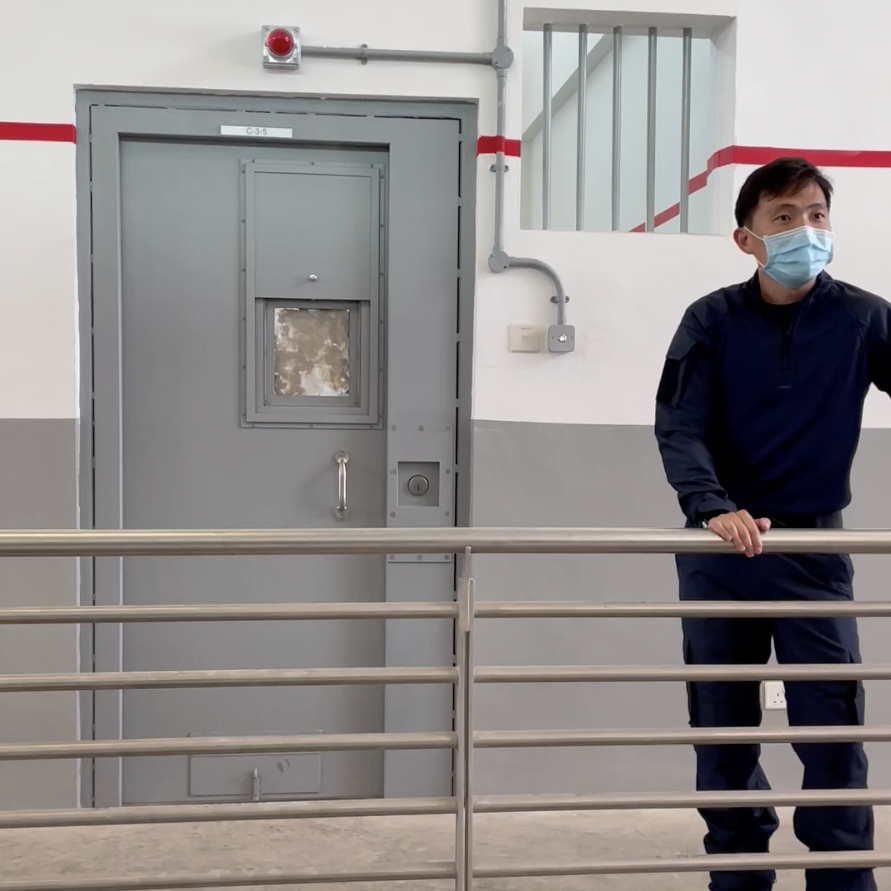 Image by Fiona Tan.
Image by Fiona Tan.
A rectangular camera can be fed under the cell's door, and its live video feed can be watched on a linked screen that is strapped to the wrist of a SPEAR force officer.
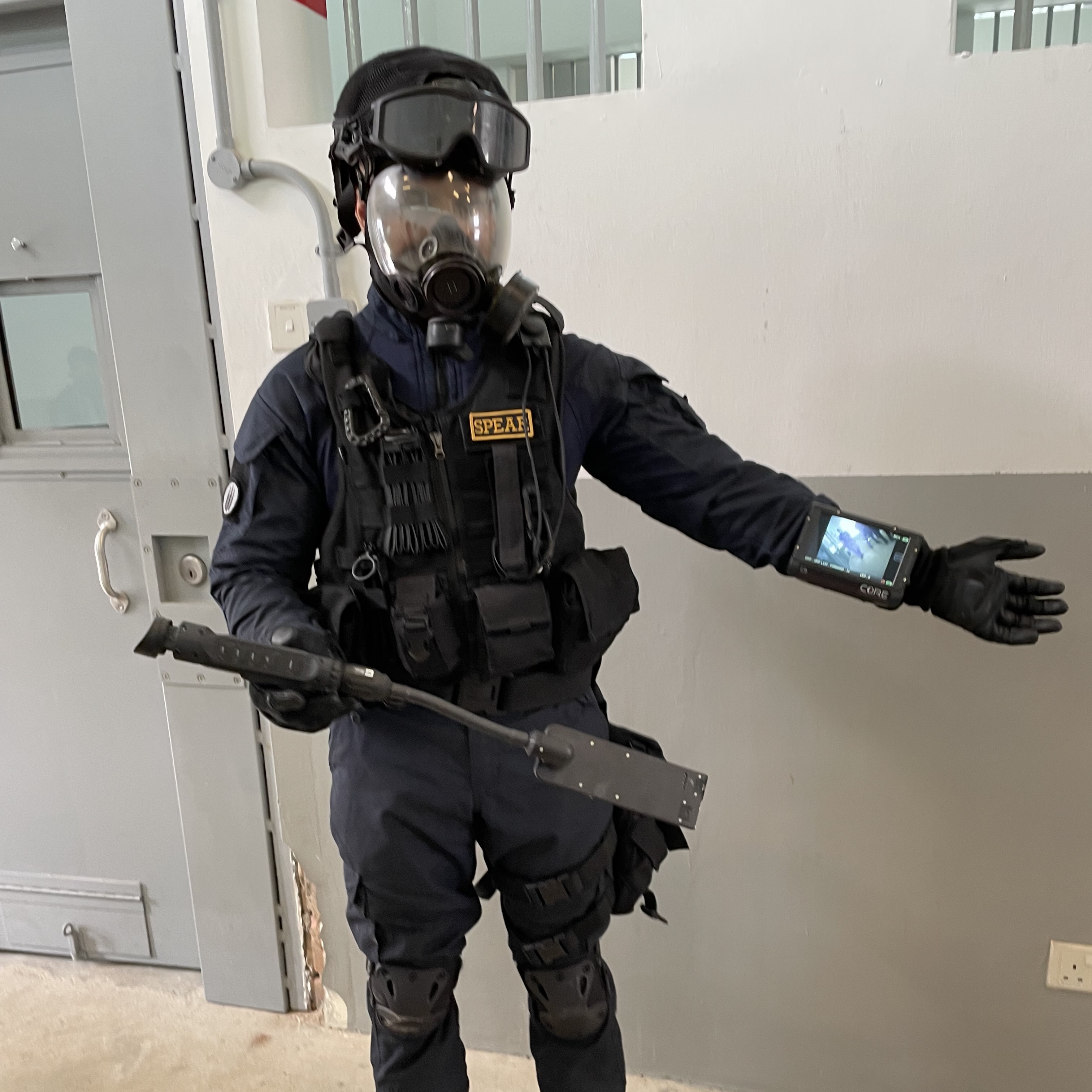 Image by Fiona Tan.
Image by Fiona Tan.
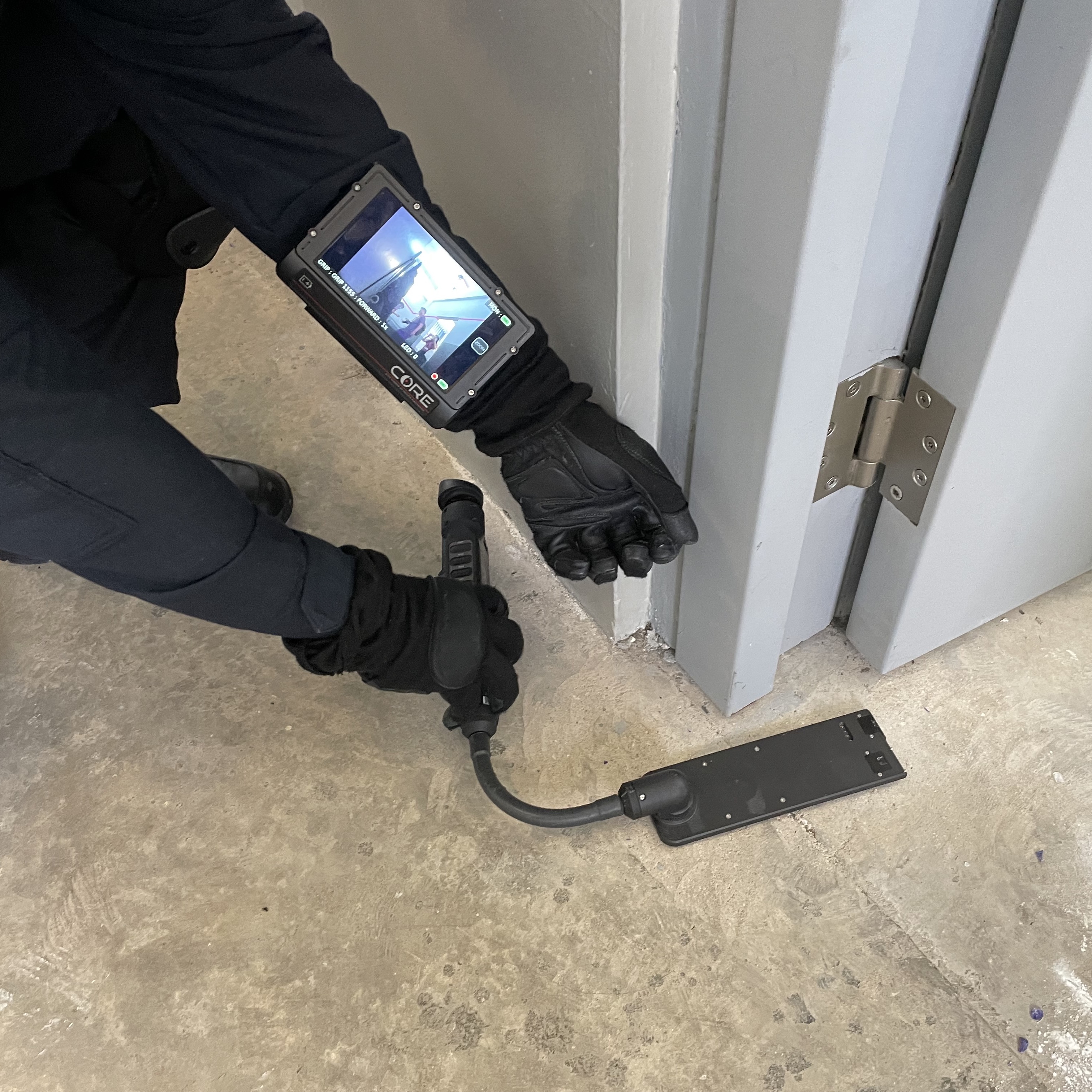 Image by Fiona Tan.
Image by Fiona Tan.
Pepper balls
To subdue a hostile target, pepper balls are discharged using a firearm fitted with a pressurised canister.
In small and confined spaces, such as an inmate's cell, a pepper mist can be delivered so that stray projectiles will not hit the inmates.
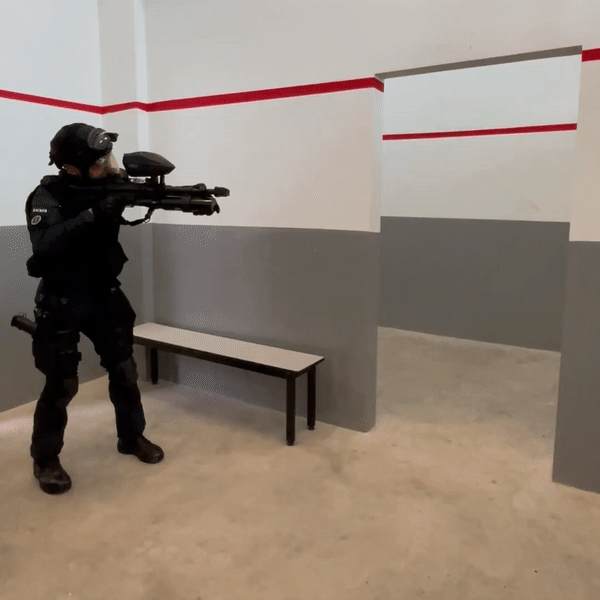 Video by Fiona Tan.
Video by Fiona Tan.
In larger areas with deeper range, the round will be shot at a hard surface straight from the launcher, where it fragments upon impact.
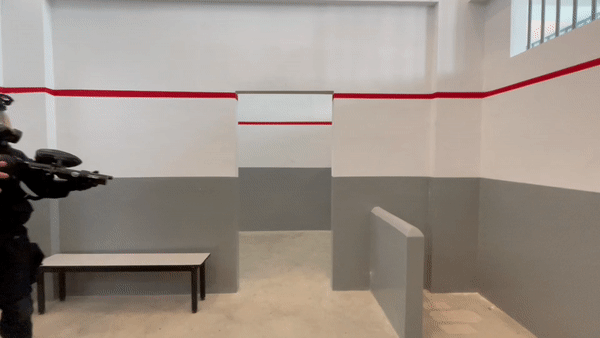 Video by Fiona Tan.
Video by Fiona Tan.
Tactical Electronic Distraction Device (TEDD)
Another method to stun a hostile inmate is by using a small but hefty palm-sized device that emits a screeching sound at 120 decibels and bright flashing lights measuring 2,600 lumen at 360 degrees to distract inmates.
The device is an adaptation from conventional distraction devices, which uses pyrotechnics, except it can be used in spaces where there is flammable or combustive gasses or chemicals, such as in kitchens.
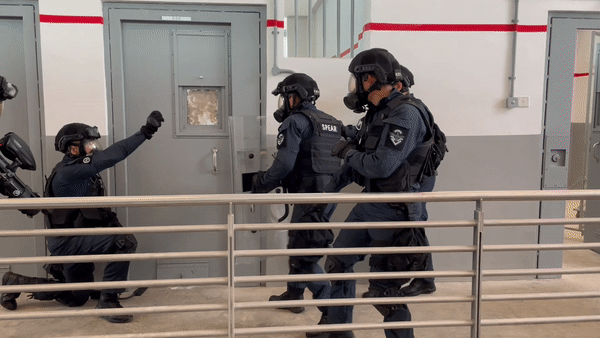 Video by Fiona Tan.
Video by Fiona Tan.
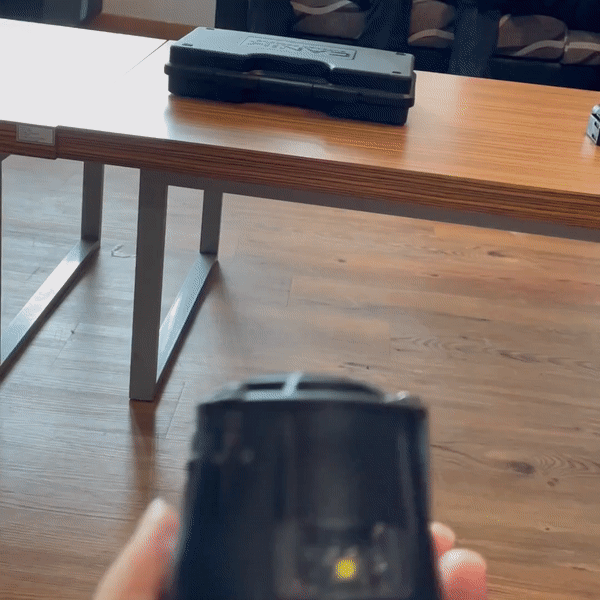 Video by Fiona Tan.
Video by Fiona Tan.
Motorised Mobile Restraint Device
In the past, SPEAR force officers had to manually carry hostile inmates across as many as eight flights of stairs just within the cell building alone.
This is after physically subduing the inmate, whereby as many as three officers can be deployed to pin one inmate down by restraining his arms and head.
These days, they use a motorised wheelchair with straps.
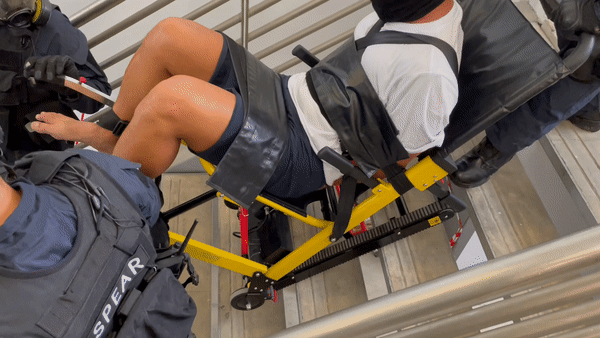 Video by Fiona Tan.
Video by Fiona Tan.
These inmates are to be manually transferred to an investigation facility or a medical facility.
Previously, four SPEAR officers would haul an uncooperative inmate down the stairs.
They had to press him against the handrails and move together.
The yellow motorised wheelchair allows officers to mechanically transfer uncooperative inmates safely up and down staircases.
Assault rate increase over the years
Teh said the unit reviews its tactics regularly.
However, he added: "Advancements and research into new items are not dependent on the [assault] statistics."
Assault cases include any assault on prison officers or inmates where the victim has sustained serious injuries.
The assault rate from April to December 2021 is 34.6.
Singapore Prison Services expects the rate to be 46.1 for the whole fiscal year from April 2021 to March 2022.
The upward trend is over a multi-year period.
The prison assault rates per 10,000 inmates over the previous five fiscal years were 24.4, 30.4, 39.1, 46.1, and 46.9, slowing a clear uptick.
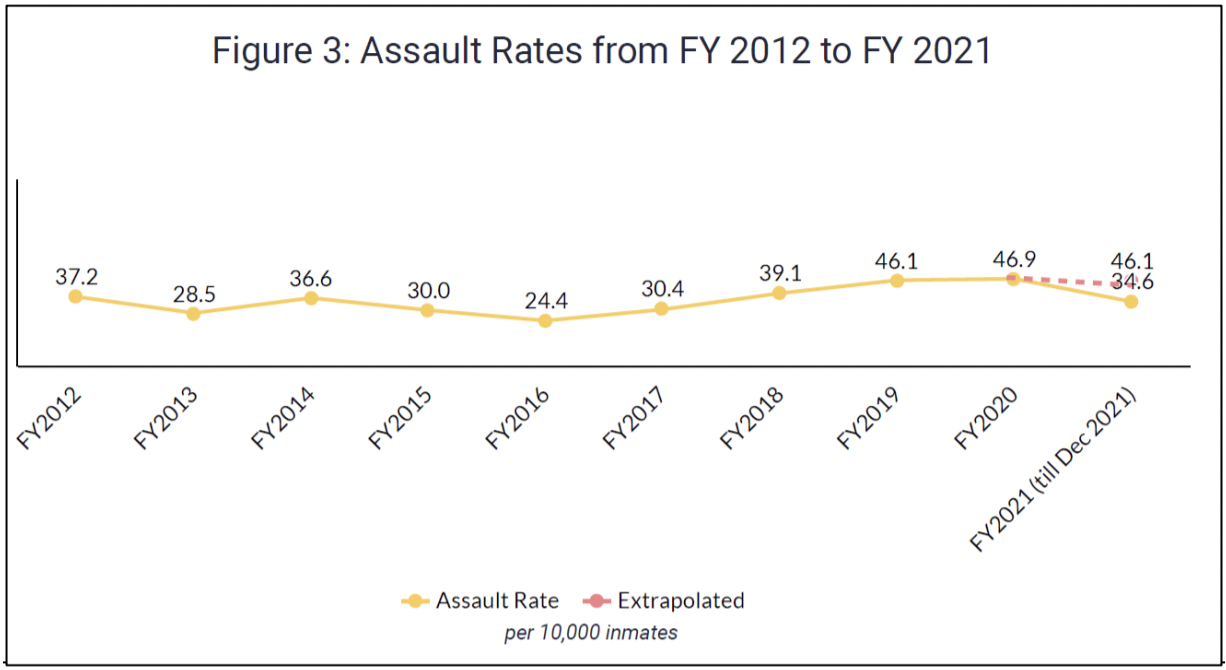 Table courtesy of Singapore Prison Services.
Table courtesy of Singapore Prison Services.
But compared to overseas counterparts that have a rate of 120 and 600 assault cases per 10,000 inmates, the assault rate in Singapore prisons remains low, said SPS director for corporate communications and relations Rafidah Suparman.
Tech devices
The adoption of technological equipment is a part of SPEAR's efforts to be a "progressive unit", said Teh
He added that research into new technological items helps to "close the specific gap" in terms of the force's capabilities in new situations, like the Covid-19 pandemic for instance.
For example, SPEAR officers "took the initiative" to source for alternative irritants that will produce lesser mucus, and thus, reduce the risk of transmission during this Covid-19 pandemic.
Whilst Teh said this alternative, a mix of lemongrass and mentholatum, is not as effective as the conventional pepper spray, it still achieves the same "softening" results and temporarily disarms the senses of hostile inmates.
Here's a full video of the process:
Related stories
Follow and listen to our podcast here
Top image by Fiona Tan
If you like what you read, follow us on Facebook, Instagram, Twitter and Telegram to get the latest updates.
